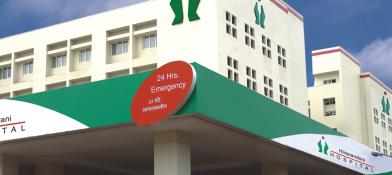Medical abortion
Overview
Medical abortion is a procedure of ending the pregnancy by using medicines. It is done as a multistep process using two medicines or multiple doses of the same medication. It is also called the non-surgical abortion or abortion pill. It is a method of terminating an undesired pregnancy. It is a safe method of terminating the pregnancy and involves the shedding of the uterine lining.
The Technique of medical abortion
This is done by taking two pills. They are mifepristone and misoprostol. Misoprostol belongs to the prostaglandin family. It can be used alone or along with mifepristone.
Medical abortion is done by counting eleven weeks starting from the first day of the woman’s last period. Two prescription hormones are prescribed to expel the fetus and placental tissue from the body after doing a physical and other necessary examination.
Mifepristone blocks the hormone progesterone so that pregnancy can no longer be continued. Misoprostol contracts the uterus and expels the pregnancy. This can be taken orally or kept in the cheeks or inserted vaginally. Oral misoprostol is taken 24 to 48 hours after mifepristone. When inserted vaginally, it should be taken 48 hours after mifepristone.
Indications
Choosing a medical abortion is a personal choice. It is done when an individual does not want to carry the pregnancy. An individual may choose for medical abortion when one has a concern of passing down a congenital condition or an inherited disease. One can select it when the pregnancy is unwanted or unplanned. After a traumatic event like rape, medical abortion can be considered as a treatment of choice when there is an unwanted pregnancy occurs.
Treatment Regimens for Medical Abortion
Treatment regimens vary depending on the duration of pregnancy.
- Suppose an individual is up to 9 weeks in pregnancy. In that case, Mifepristone medication is given as a single oral dose for up to 9 weeks and misoprostol as a single oral dose taken 24-48 hours after mifepristone. Misoprostol alone can be prescribed as a vaginal or sublingual medication every 3-12 hours up to 3 doses.
- If an individual is between 9-12 weeks of pregnancy: Misoprostol is given as Vaginal and oral dose.
- If an individual is in >12 weeks of pregnancy: Mifepristone oral along with two doses of misoprostol vaginal doses can be given, or oral mifepristone along with oral and vaginal doses of misoprostol can be given. Misoprostol should be taken 36–48 hours after taking mifepristone every 3 hours up to 5 doses. Only misoprostol vaginal or sublingual doses can also be given.
Before The Procedure of Medical Abortion
Before undergoing a medical abortion, one has to get a few medical tests done. These include blood tests or urine tests to confirm the pregnancy. A pelvic examination to confirm the pregnancy and estimate the weeks of pregnancy. A few blood tests were performed to identify the blood group and type. Imaging tests like ultrasound can be used to confirm the weeks of pregnancy. One should also give information on the history of medications that are being taken and any previous abortions in the past.
During The Procedure
An individual undergoing a medical abortion should be counseled. Counseling includes the available abortion methods, pain management strategies, procedures, recovery, complications, everyday activities, and when one can resume sexual life.
Based on the dosages and recommended way, the abortion pill medications can be taken either at home or sometimes in their office to check for any complications.
After The Procedure
After taking the pills, bleeding and cramping start one to four hours after taking the second pill, followed by heavy cramping pain. Bleeding with blood clots will be followed soon. Some may experience low-grade fever for a day after taking a second pill.
It takes about two to six hours after the second pill for the abortion to take place. The duration may vary in some. The cramping pain during abortion feels like intense period cramps, and they may differ from one individual to another.
An individual has to be given emotional support after an abortion. They should be monitored for complications, and immediate medical support should be provided in case of emergencies. One can have a follow-up 7-14 days after medical abortion to confirm that the uterine contents are completely removed and the pregnancy is obliterated.
The success of medical abortion
Medical abortion is considered successful if there is heavy bleeding associated with clots, the passage of certain products of conception from the uterus, and pain that is stronger than normal menstrual cramps.
Side-effects
Bleeding and cramping are the significant side effects, which can last for several hours to days. One can have heavy bleeding and cramping pain one or two days after abortion and have moderate bleeding for several weeks, typically two to three weeks. Pain after abortion can be controlled by using medications, heating pads, and hot water bottles. In case of severe bleeding, vacuum aspiration of the uterine contents may be done. A blood transfusion may be required if one has severe bleeding. Other side effects include tiredness, nausea, dizziness, or diarrhea. Pelvic infection is another complication that can occur due to medical abortion. Antibiotics and uterine evacuation can treat this.
Risks and complications
Medical abortion can have certain risks, like not being able to abort the pregnancy, leading to ongoing pregnancy. This should be suspected when an individual has only minimal bleeding after taking the medication. Ectopic pregnancy (pregnancy occurring outside the uterus) can cause prolonged bleeding and cramping along with continuing pregnancy. In such conditions, further evaluation has to be done.
Conclusion
Medical abortion offers a safe and effective method for terminating early pregnancies. It is a non-surgical way of removing unwanted pregnancies by taking certain medications. By careful administration of drugs, one can safely end the pregnancy successfully.































